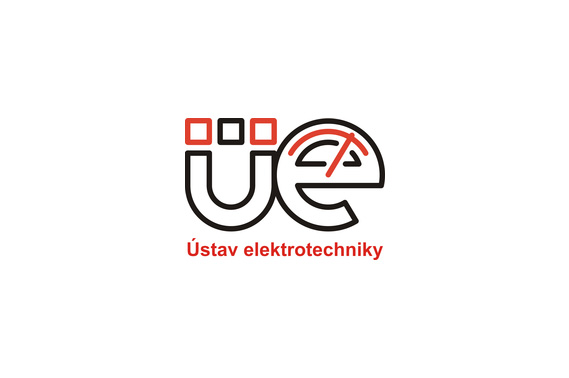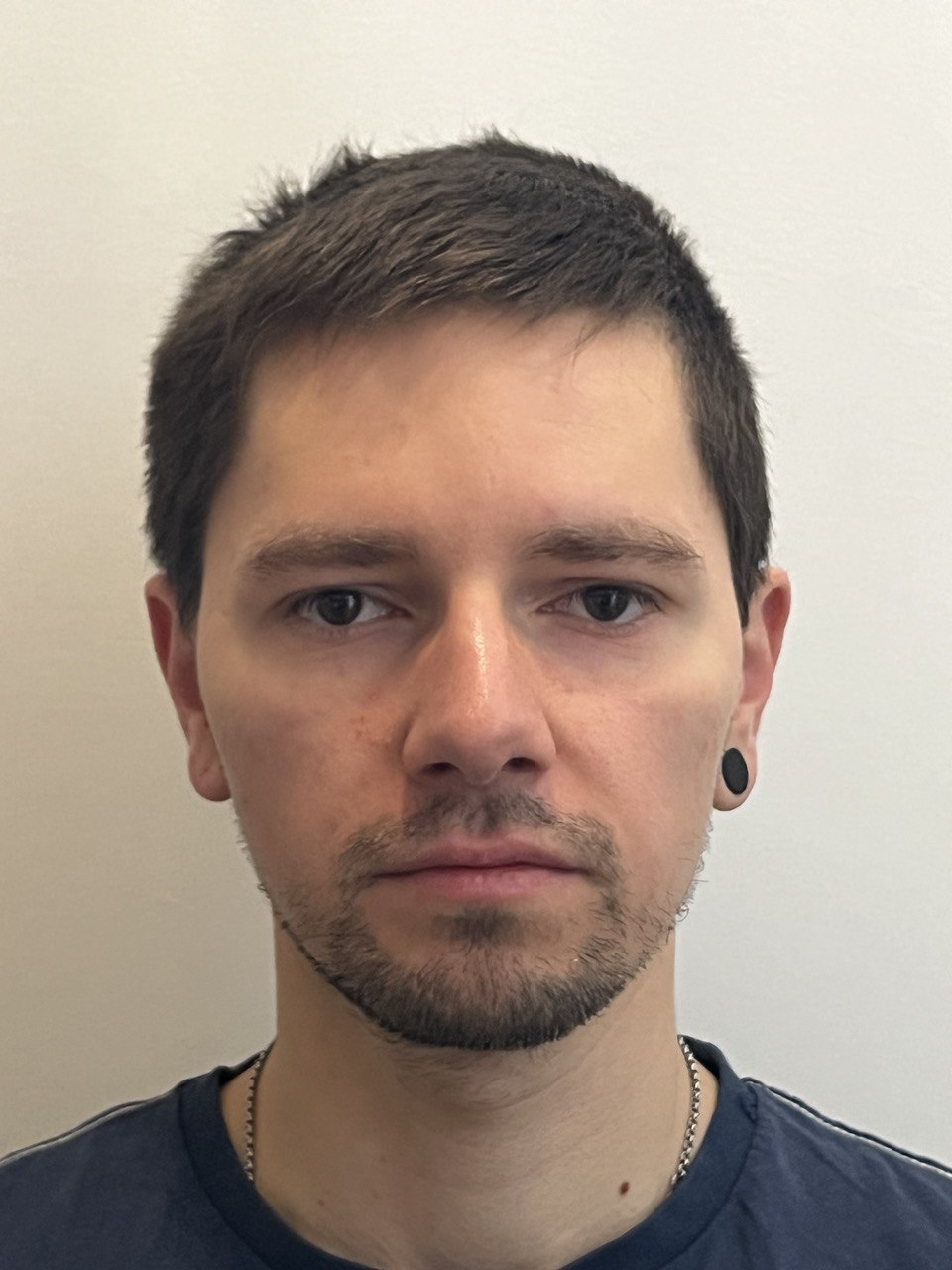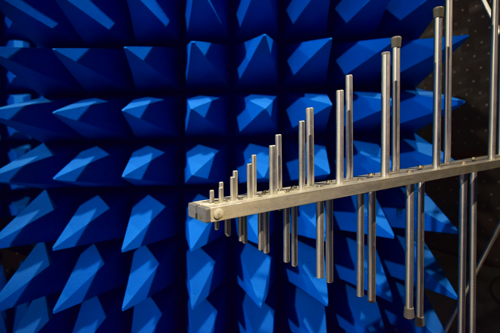Task
Find and validate a new method for diagnosing a damaged segment of a large antenna system. Solution
Hybrid method:
– calculation of directional characteristics of a large antenna system using known geometry and electrical properties of individual antennas,
– measurement of directional characteristics using a drone,
– mathematical processing. Contributions
– ability to analyze and synthesize passive high-frequency devices such as lines, radiators, splitters, combiners, and signal routers,
– ability to match a load to a generator,
– ability to measure high-frequency circuit parameters,
– ability to diagnose large-scale high-frequency systems,
– ability to design a high-frequency path in an antenna counting system,
– ability to design a high-frequency path in an antenna counting system, – ability to design a high-frequency path in an antenna counting system, – ability to design a high-frequency path in an antenna counting system, – ability to design a high-frequency path in an antenna counting system. Ability to design a solution, defend the solution, present the solution, and work collaboratively in a team to implement the solution.
The picture shows a view of the antenna system (AS) installed on the monorail. The AS in this case is designed for FM radio broadcasting. As we can see the antennas are large, uncovered and thus stressed by weather in winter and summer. The lifetime of AS is calculated in decades and thus towards the end of their lifetime problems and failures of individual antennas occur.
Use
We have developed a method at the UE that determines the damaged antenna with certainty based on measurements in the directional characteristics of the AS in the E and H planes and by calculating the AS properties using a numerical method (ideally MoM). This method can be used when both the damaged AS and other systems located on the monorail are in full operation. The method saves time, money and maintenance time (AS decommissioning time).
Benefits:
Task
To develop a broadband low-cost and accurate electromagnetic field sensor for use in measuring hygienic radiation limits. Solution
Modified resistive dipole:
– Analysis of the properties of the modified resistive dipole,
– Measurement of the amplitude-current-frequency characteristics and comparison with a standard resistive dipole,
– Design of the antenna deployment,
– Design of the electronics design,
– Data collection using IoT,
– metrological properties of the sensor,
– physical properties of the sensor Benefits
– low cost broadband sensor,
– excellent metrological parameters
– ability to connect the sensor to an international monitoring network,
– ability to monitor online the electromagnetic parameters of the environment
In the picture we can see the Akrim electromagnetic field strength meter, which was developed at the former Department of Measurement – in the Electromagnetic Compatibility Laboratory (if you are interested, you can download a publication on this subject here). Despite the advanced age, the principle of the sensor has not yet bitten the dust. In the world literature we can find a number of its clones, which are used for ultra wide frequency characteristic. The sensing element can be discretized while retaining all its positive properties. This concept will form the basis of the new sensor.
Use
Nowadays we measure almost everything, smog, exhalates, storm clouds, humidity, temperature, air quality… We just somehow forget that there is an invisible electromagnetic field (EMF) around us that also affects the quality of the environment we live in. Some developed countries have woken up, but we are still asleep. The EMF sensor being developed is to be one of the first swallows to bring about an awakening. Its task will not only be to sense the individual frequency components of EMFs and their intensity, but also to transmit this data to an international network which contains a database of a number of sensors located in various European cities.
Benefits:
Task
Create a single-component force sensor, pressure, … with non-contact information transmission. Solution
Exploiting electromagnetic phenomena of the near electromagnetic field:
– Analysis of the influence of passive structures on the change of the emitter properties,
– S11 characteristic pre-current carrying information about the incident/acting physical quantity,
– Quantification of the transfer characteristic,
– Emergence of MEMS structures,
– emergence of sensors with interesting topology and properties, Benefits
– new principle of information transfer,
– sensor unencumbered by the error created by the momentum of the signal conductors,
– sensor with excellent dynamic properties,
– wide range of applications of sensors – e.g. tire pressure
In the picture we can see the Akrim electromagnetic field strength meter, which was developed at the former Department of Measurement – in the Electromagnetic Compatibility Laboratory (if you are interested, you can download a publication on this subject here). Despite the advanced age, the principle of the sensor has not yet bitten the dust. In the world literature we can find a number of its clones, which are used for ultra wide frequency characteristic. The sensing element can be discretized while retaining all its positive properties. This concept will form the basis of the new sensor.
Use
Nowadays we measure almost everything, smog, exhalates, storm clouds, humidity, temperature, air quality… We just somehow forget that there is an invisible electromagnetic field (EMF) around us that also affects the quality of the environment we live in. Some developed countries have woken up, but we are still asleep. The EMF sensor being developed is to be one of the first swallows to bring about an awakening. Its task will not only be to sense the individual frequency components of EMFs and their intensity, but also to transmit this data to an international network which contains a database of a number of sensors located in various European cities.
Benefits:
Task
Creation of a homogeneous electromagnetic environment for the study of the effects of electromagnetism on the physiology of animals – wine flies (drosophila) Solution
The influence of electromagnetic fields on organisms represents one of the most controversial topics in the presently over-technicized world. The study of this issue requires the provision of a constant level of electromagnetic field (EMF) in a certain volume in order to achieve field homogeneity and a reproducible distribution. At the same time, it is essential that the EMF and its source do not affect the environment/organisms under test in any way other than by electromagnetic changes. Monitoring, recording and ensuring reproducibility of EMF levels and homogeneity are key aspects for many experiments. Contributions
– creating an environment with homogeneous EMF,
– comparative measurements in and without EMF,
– tracking changes in drosophila behaviour,
– tracking physiological changes in drosophila
In the picture we can see a feeder for drosophila, where on one side of the tube is the food and on the other side the flies are sleeping. The electronics count the passages of the flies between the ends of the tube and therefore the activity of the drosophila. This device will be inserted into the EMP and the change in fly behaviour will be detected. In the second picture we see the flies in the food tube.
Making Sense
Is EMF harmful to biological objects? Does it affect them ? To what extent? We want to answer these questions with research provided by the Institute of Zoology of the Slovak Academy of Sciences with which we cooperate. Our task is to create homogeneous and repeatable EMFs.
Benefits:
High Frequency Technology Group
Join more than 100 students who study at the Institute of Electrical Engineering
Be part of ÚE and start your career.



















